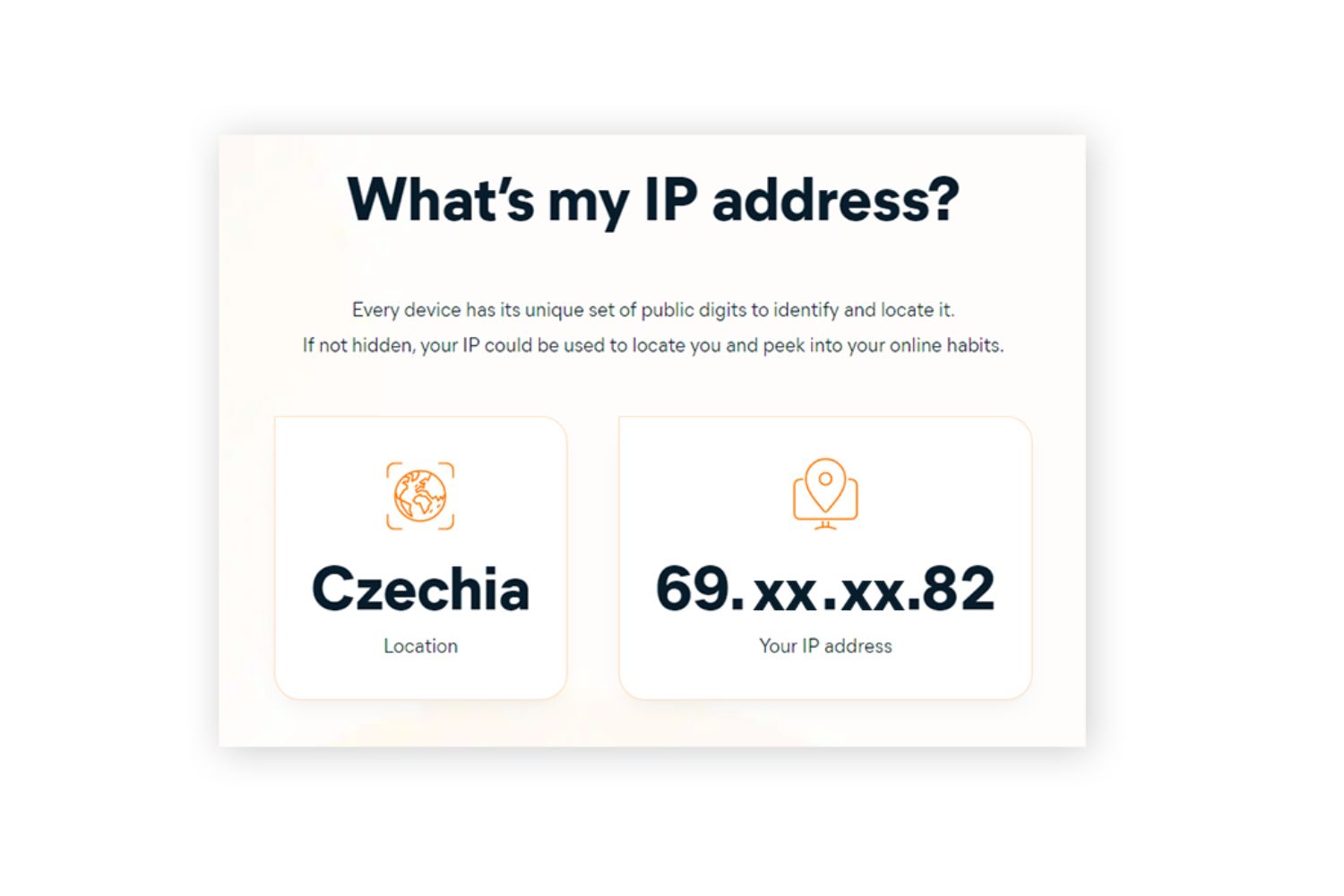Introduction
Welcome to the world of cybersecurity, where threats lurk around every digital corner. One of the most pervasive and annoying forms of cyber threats is spam. We’ve all encountered it – those unsolicited emails that clutter our inbox, promising outrageous offers, promoting dubious products, or even attempting to steal sensitive information. Spam is not only a nuisance, but it can also pose serious risks to our online security.
Spam, in the digital realm, refers to unsolicited and unwanted messages sent in bulk to a large number of recipients. These messages can take various forms, such as emails, text messages, or even comments on websites. The people responsible for spam are commonly known as spammers, and their primary goal is to spread their message or deceive unsuspecting individuals for financial gain.
Spam works by exploiting various platforms, including email servers, social media platforms, and even search engine results pages. Spammers use automated software, commonly referred to as spam bots, to scrape websites or harvest email addresses from different sources. These bots then send out massive volumes of spam messages, bombarding the recipients in the hope that a small percentage will fall for the tricks or scams.
There are several types of spam, each with its own distinctive characteristics. Some common types include email spam, which floods your inbox with unwanted messages; social media spam, where spammers post malicious links or false information on social networking sites; and comment spam, which fills the comment sections of websites with unrelated advertising or links. Regardless of the type, spam is not just a nuisance but a serious cybersecurity threat that can lead to scams, identity theft, malware infections, and financial losses.
Protecting ourselves from spam is of utmost importance in today’s digital age. By being aware of the dangers and understanding how these scams operate, we can take proactive measures to safeguard our online presence. In this article, we will explore the various types of spam, the risks it poses, common spam scams to watch out for, and most importantly, effective strategies to prevent becoming a victim of spam.
What is Spam?
Spam, in the context of cybersecurity, refers to unsolicited and unwanted messages sent in bulk to a large number of recipients. It is a widespread problem that affects email platforms, social media networks, and even online comment sections.
Email spam is perhaps the most common form of spam. We’ve all received those annoying messages promoting dubious offers, miracle products, or even scams. These emails often appear in our inbox without prior consent, cluttering our digital space. Social media spam is another prevalent type, where spammers post misleading or malicious content on social networking sites. Comment spam is yet another example, where automated bots fill website comment sections with unrelated advertising or link placements.
The primary motivation behind spam is financial gain. Spammers often utilize deceptive tactics to trick recipients into clicking on links, purchasing products or services, or providing sensitive information. By bombarding a large number of individuals, they hope to reach a small percentage that falls for their scams.
Spam messages typically contain enticing subject lines or misleading information to catch the recipient’s attention. They may use fake identities, forged email addresses, or even pose as reputable organizations to gain credibility. The content of spam messages can vary widely – from offers for discounted products, financial schemes promising instant wealth, to phishing attempts seeking personal information.
Spam is not just a nuisance; it poses significant risks to our online security. Clicking on spam links can lead to malware infections on our devices, compromising our personal information, or even hijacking our accounts. In some cases, spam emails may contain malicious attachments that, when opened, can unleash a variety of damaging viruses or ransomware.
Moreover, falling for spam scams can have serious financial consequences. Some spammers operate sophisticated schemes designed to convince victims to provide their credit card information, banking details, or even send money for fake services. Others may solicit donations for fake charities or pretend to be in distress and urgently require financial assistance.
Understanding what spam is and the risks it poses is crucial for our digital well-being. It allows us to identify and avoid potential threats, protecting ourselves and our sensitive information from falling into the wrong hands.
How does Spam work?
Spam operates through various mechanisms, utilizing automated software, commonly known as spam bots, to send out unsolicited messages in bulk to a large number of recipients. Understanding how spam works can help us identify and combat this intrusive and potentially dangerous cyber threat.
One of the primary methods used by spammers is email harvesting. They employ specialized software or bot networks to scour the internet, extracting email addresses from websites, online directories, or social media platforms. They can also purchase or obtain email lists from third-party sources. Once they have a substantial list of email addresses, they can begin their spamming campaigns.
Spam bots send out massive volumes of emails with enticing subject lines, compelling content, or misleading information. These emails often include embedded links or attachments that, when clicked or opened, can lead to malware infections, phishing attempts, or other harmful consequences.
To avoid detection by email providers’ spam filters, spammers use various techniques to make their messages appear legitimate. They may forge the sender’s email address, making it seem as if the email is coming from a reputable source. Additionally, they employ obfuscation techniques to hide malicious links within the email content, making it more challenging for filters to detect them.
Spam is not limited to email platforms. Social media networks are also targeted by spammers. They create fake accounts or use compromised accounts to post misleading or malicious links. These links often lead to fraudulent websites or promote counterfeit products.
Another avenue for spammers is comment sections on websites and blogs. They use automated bots to flood these sections with unrelated advertising, links to malicious sites, or even comments that may contain potentially harmful content.
Spammers are constantly evolving their tactics to bypass security measures and increase the chances of their messages reaching potential victims. This includes employing techniques such as image-based spam, where the text of the message is embedded within an image to evade detection, or using sophisticated obfuscation methods to make the content appear as legitimate and relevant as possible.
Understanding how spam works allows us to be vigilant and take proactive measures to protect ourselves. By being aware of the techniques, we can be more cautious when dealing with unsolicited messages, avoid clicking on suspicious links, and implement effective spam filters and security measures to reduce the risk of falling victim to spam campaigns.
Types of Spam
Spam comes in various forms, targeting different platforms and utilizing different tactics to reach its intended victims. Understanding the different types of spam can help us recognize and mitigate these threats effectively.
1. Email Spam: Email spam is perhaps the most well-known and common type of spam. It involves the mass distribution of unsolicited and often deceptive emails. These emails can range from promotional messages for questionable products or services to phishing attempts that aim to trick recipients into revealing sensitive information like passwords or credit card details.
2. Social Media Spam: Spammers often exploit social media platforms to spread their messages. They create fake accounts or hijack compromised accounts to post malicious links, scam offers, or misleading content. Social media spam can be in the form of direct messages, comments, or even posts on groups or pages.
3. Comment Spam: Comment spam targets websites or blogs with comment sections. Spammers use automated bots to post irrelevant or promotional comments that contain links to their websites. These links may lead to scams, malware, or counterfeit product offerings.
4. SMS/Text Message Spam: Spam isn’t limited to email or online platforms. Spammers also target mobile users through SMS or text messages. These messages may advertise dubious services, lottery scams, or fake prizes, urging recipients to respond or click on links provided.
5. Instant Messaging Spam: With the popularity of instant messaging apps, spammers have found ways to exploit these platforms as well. They may send unsolicited messages with malicious links or attempt to engage in conversation to trick users into sharing personal information.
6. Search Engine Spam: Search engine spam refers to websites or webpages created with the sole intent of manipulating search engine rankings or delivering malicious content. These spam sites often use keyword stuffing, hidden text, or link farming techniques to deceive search engine algorithms and appear higher in search results.
7. Voice Call Spam: In recent years, the rise in voice over IP (VoIP) technology has led to an increase in voice call spam. Spammers use automated systems to make unsolicited and annoying phone calls, often delivering recorded messages or attempting scams.
These are just a few examples of the types of spam that exist, but the landscape is constantly evolving. Spammers continuously adapt their strategies to bypass security measures and target unsuspecting individuals. By staying informed about the various types of spam, we can better protect ourselves and minimize the risks associated with these unwanted and harmful messages.
Why is Spam Dangerous?
While spam may seem like a mere annoyance, it poses significant risks and dangers to individuals and organizations alike. Understanding why spam is dangerous is essential for recognizing the need to take proactive measures to prevent falling victim to its malicious intent.
1. Malware Infections: Spam often contains links to malicious websites or infected attachments. Clicking on these links or opening the attachments can result in malware infections on your device. Malware can take various forms, including viruses, worms, ransomware, or spyware, compromising your data, privacy, and security.
2. Phishing and Identity Theft: Many spam messages attempt to deceive recipients into sharing sensitive information, such as passwords, credit card details, or social security numbers. These tactics are part of phishing scams, where scammers pose as legitimate organizations or individuals to trick victims. Falling for these scams can lead to identity theft and financial loss.
3. Financial Loss: Spam emails often promote fraudulent schemes or products. These scams may promise quick financial gains, investment opportunities, or discounted products. However, engaging with these scams can result in significant financial losses as victims are tricked into making payments for non-existent goods or services.
4. Data Breaches: Spammers are constantly seeking to obtain sensitive information like usernames, passwords, or financial details. If you fall for a spam email that requests such information, you could unwittingly provide access to your personal or corporate accounts, leading to data breaches and potential financial or reputational damage.
5. Product Counterfeiting: Some spam emails promote counterfeit products or services, enticing recipients with seemingly incredible offers. However, purchasing these fake products not only results in wasting money but can also lead to health and safety risks, as counterfeit goods may not adhere to necessary regulations or standards.
6. Overwhelming Network Resources: Spam emails sent in large quantities can overload email servers and consume valuable network resources. This can cause delays in legitimate email delivery and disrupt communication for individuals and businesses.
7. Erosion of Trust: Spam can erode trust in digital communications. Constantly receiving unwanted and deceptive emails or messages can make individuals cautious and skeptical about genuine messages, leading to a loss of trust in online platforms and interactions.
These dangers highlight the importance of taking spam seriously and implementing effective measures to protect yourself and your organization. By being vigilant, recognizing the risks, and employing proper security practices, you can significantly reduce the impact of spam and safeguard your digital well-being.
Common Spam Scams
Spam emails are not just annoying; they often serve as a vehicle for various scams aimed at deceiving recipients and extracting personal information, money, or both. Knowing about common spam scams can help you identify red flags and avoid falling victim to these fraudulent schemes.
1. Phishing Scams: Phishing scams involve fraudulent emails that mimic legitimate organizations, such as banks or online retailers. These emails typically request personal or financial information, urging recipients to update their account details or verify their credentials. Falling for these scams can result in identity theft or unauthorized access to your accounts.
2. Nigerian Prince Scams: Also known as advance-fee scams, this classic spam scam involves an email from someone claiming to be a wealthy individual, government official, or relative in distress. They promise huge sums of money in exchange for assistance in transferring funds. However, victims are required to make upfront payments or provide banking details. In reality, there are no funds, and victims are left with financial losses.
3. Lottery and Prize Scams: Spam emails claiming that you’ve won a lottery or prize are common. These scams often request personal information or require you to pay fees or taxes to claim your winnings. In reality, there is no prize, and providing personal information can lead to identity theft or financial fraud.
4. Fake Product Sales: Spam emails advertising counterfeit or imitation goods at unrealistically low prices are prevalent. These scams may entice recipients with promises of high-quality products or exclusive deals. However, purchasing these items can result in receiving counterfeit or even dangerous goods.
5. Investment Scams: Spam emails promoting investment opportunities, especially in cryptocurrencies, are frequent. These scams promise huge profits or guaranteed returns with minimal risk. However, the investments are often fraudulent, and individuals can lose significant amounts of money.
6. Romance Scams: Spam emails posing as romantic interests, often from individuals in distant countries, can lead to emotional manipulation and financial exploitation. Scammers build trust and establish relationships to persuade victims to send money or provide financial support under false pretenses.
7. Tech Support Scams: These scams involve emails or pop-up messages claiming that your computer has a virus or technical issue. The scammers pose as tech support personnel and request access to your device or payment for fake services. In reality, they are trying to gain control of your computer or extract money from you.
These are just a few examples of common spam scams, but new schemes constantly emerge. It’s essential to remain cautious and skeptical when dealing with unsolicited emails, messages, or offers. Remember to never provide personal information, click on suspicious links, or engage with unknown individuals or organizations without verifying their legitimacy.
How to Prevent Spam?
Preventing spam requires proactive measures to filter out unwanted messages and protect yourself and your online presence. Here are some effective strategies to help you minimize the amount of spam you receive:
1. Use a Spam Filter: Most email providers offer built-in spam filters that automatically detect and divert spam emails to a separate folder or mark them as spam. Make sure to enable this feature and periodically check your spam folder to ensure no legitimate emails are filtered out.
2. Be Cautious with Personal Information: Avoid sharing your personal information, such as email addresses or phone numbers, on public platforms or websites. Spammers often harvest this information from online sources to send spam messages. Only provide your personal details to trusted and reputable sources.
3. Opt-Out and Unsubscribe: If you receive unwanted marketing emails, make use of the “unsubscribe” option usually available at the bottom of the message. This will remove your email address from their mailing list and reduce future spam from that particular sender.
4. Avoid Clicking on Suspicious Links: Exercise caution when clicking on links in emails or messages, especially if they are from unknown sources or appear suspicious. Hover over the link to preview the URL before clicking, and if it looks questionable, it’s best to avoid clicking on it to mitigate the risk of malware infections or phishing attempts.
5. Use Disposable Email Addresses: Consider using disposable email addresses for online sign-ups or when providing your email address on less trusted platforms. Disposable email services allow you to create temporary email addresses that forward messages to your primary email account. If you start receiving spam on a disposable address, you can easily dispose of it without affecting your primary inbox.
6. Be Wary of Unsolicited Messages: Treat unsolicited messages, including emails, text messages, and friend requests, with caution. Be skeptical of offers that seem too good to be true or requests for personal information. When in doubt, verify the legitimacy of the sender or the organization through independent research or by contacting them directly through trusted channels.
7. Keep Software and Security Measures Updated: Ensure that your operating system, web browsers, and security software are up to date. Regularly install updates and patches to fix any vulnerabilities that spammers may exploit to gain access to your device or personal information.
8. Implement CAPTCHA: Consider implementing CAPTCHA (Completely Automated Public Turing test to tell Computers and Humans Apart) on your website’s forms or comment sections to prevent automated bots from leaving spam messages or submitting fake entries.
By employing these preventive measures, you can significantly reduce the amount of spam you encounter and minimize the risks associated with malicious spam messages.
Protecting Yourself from Spam
Protecting yourself from spam requires a proactive approach and a combination of strategies to minimize the risk of falling victim to spam messages. Here are some effective methods for safeguarding yourself from spam:
1. Educate Yourself: Familiarize yourself with the different types of spam and common spam scams. Stay informed about the latest tactics used by spammers and be aware of the red flags that indicate a potentially fraudulent message.
2. Maintain Good Security Practices: Keep your devices and software up to date with the latest security patches. Use reputable antivirus and anti-malware software to detect and remove any potential threats. Regularly scan your system for malware and perform backups of your important files.
3. Strengthen Passwords: Use strong, unique passwords for your email accounts and other online services. Avoid using easily guessable passwords, such as birthdays or common phrases. Consider using a password manager to securely store and generate complex passwords.
4. Be Vigilant with Emails: Exercise caution when opening emails, especially those from unfamiliar senders. Look for signs of suspicious or phishing emails, such as misspellings, grammatical errors, or requests for personal information. Be wary of attachments and links, and verify the authenticity of the sender before taking any action.
5. Avoid Responding to Spam: Engaging with spam messages, even to unsubscribe or ask to be removed, can sometimes validate your email address and lead to more spam. Instead, use the built-in spam filters or your email provider’s reporting system to mark spam emails and report them as such.
6. Use Disposable Email Addresses: Consider using disposable email addresses when signing up for online services or websites that may require email verification. This ensures that your primary email address remains protected from potential spam or data breaches.
7. Opt-Out and Unsubscribe: Take advantage of the “unsubscribe” feature in marketing emails from reputable sources. This will remove your email address from their mailing lists and reduce the volume of promotional emails you receive.
8. Report Spam: Report any unsolicited or malicious emails to your email provider or relevant authorities. This helps in identifying and taking down spammers and their operations.
9. Utilize Filtering and Block List Features: Use the filtering options provided by your email service to automatically send suspected spam emails to a dedicated folder. Additionally, consider creating a block list of known spammers or suspicious email addresses to minimize the chances of receiving spam.
10. Be cautious with Personal Information: Avoid sharing personal information, such as email addresses or phone numbers, on public platforms or websites. Spammers often scrape these sources to send unsolicited messages. Only provide your personal details to trusted and reputable sources.
By implementing these measures, you can enhance your protection against spam and reduce the risks associated with falling victim to spam-related scams.
Conclusion
Spam is not just an annoyance; it poses serious risks to our online security and personal well-being. Understanding what spam is, how it works, and the various types and scams associated with it is vital for protecting ourselves in the digital landscape.
From unsolicited emails and social media spam to comment spam and text message scams, spammers employ a range of tactics to deceive and exploit unsuspecting individuals. These fraudulent messages often lead to malware infections, financial losses, identity theft, and compromised personal information.
Preventing spam requires proactive measures. Using spam filters, being cautious with personal information, and avoiding clicking on suspicious links are some effective strategies to reduce the amount of spam you receive. Educating yourself about common spam scams and staying vigilant with email communication are also essential.
Additionally, keeping your devices and software up to date, using strong passwords, and reporting spam to the appropriate authorities or email providers contribute to a safer online environment.
While spam continues to evolve, staying informed and adopting preventative measures can significantly reduce the risks associated with this pervasive cyber threat. By implementing these strategies and remaining vigilant, you can better safeguard yourself and your digital presence from the dangers of spam.

























